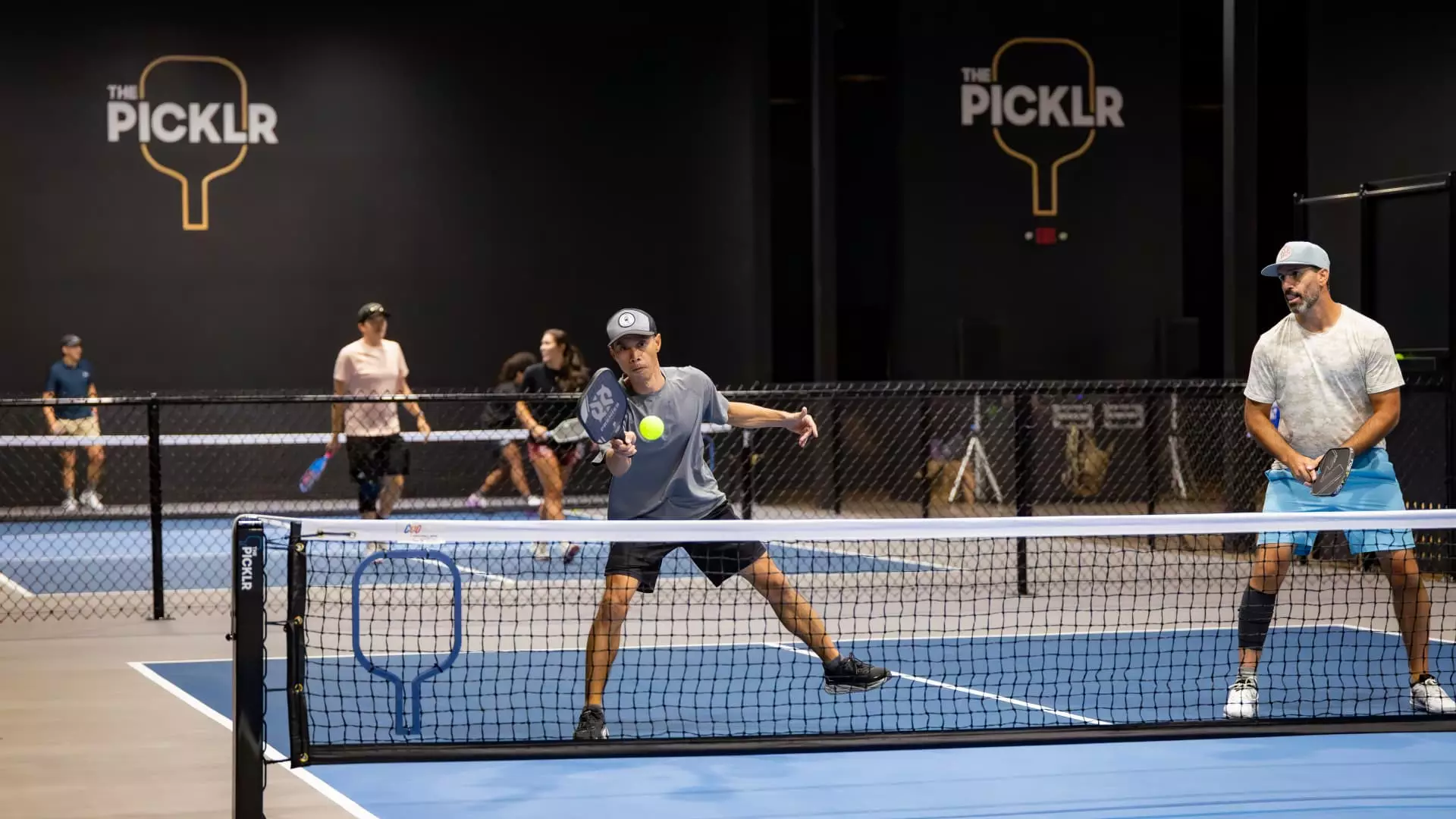In a seismic shift within the sporting landscape, pickleball continues to capture global interest, and Japan finds itself at the forefront of this precarious trend. The announcement of The Picklr’s intention to open 20 new locations in Japan over the next five years is both exhilarating and concerning. While it’s tempting to view this as a golden opportunity for sports and community bonding, one must also question the sustainability of such rapid expansion in a market that is just awakening to the sport.
According to the Sports and Fitness Industry Association, pickleball saw a staggering 223% increase in participation over a mere three-year span. Positioning itself as the “fastest-growing” sport in recent years, it boasts over 20 million players in the U.S. alone. However, numbers can be deceiving. The allure of new activities often fades as quickly as it rises, particularly in a culture that experiences trends with a fervor that can be as fleeting as it is enthusiastic. Is Japan truly ready to embrace pickleball long-term, or is this merely a passing phase?
The Picklr’s Game Plan
Led by CEO Jorge Barragan, The Picklr aims for aggressive growth, having already carved out a presence in North America with 40 operational facilities, with plans to double that by year-end. More than 500 franchises have been sold globally, including in Japan. Barragan’s vision is ambitious: he sees Japan not just as a market, but as a “launching pad” for expanding further into Asia. This vision hinges on the notion that Japanese culture—characterized by an appreciation for health, community, and racket sports—will welcome this novel addition to their sporting repertoire.
However, this perspective may be overly optimistic. While the Japanese population does prioritize health and community, their inherent caution with trends suggests a more nuanced reception to this foreign concept. Herein lies a critical question: can pickleball’s appeal endure against the backdrop of a culturally rich sports landscape that includes established traditional games like tennis and badminton?
The Challenges Ahead
The facilities slated for construction will be strategically located in retail, office, and lightly industrialized areas, which suggests an intention to make pickleball accessible and integrated into daily life. Yet, this approach raises questions regarding the target demographic. Will working professionals, families, and sports enthusiasts wholeheartedly embrace the concept of dedicating time to yet another sport? The membership model—averaging between 500 and 700 members per club—may provide an initial successful turnout, but sustaining this level of interest will demand ongoing community engagement and effective marketing strategies.
Moreover, Barragan’s assertion that interest in pickleball shows no signs of slowing is both refreshing and concerning. A monthly influx of over 220 leads sounds promising, but what does it signify if those leads are not converting into long-term participants? Trends in sports can pivot dramatically; today’s ace can become tomorrow’s out. Just as quickly as the pickleball movement has risen, it could potentially fall out of favor, leaving behind a slew of investments and unfulfilled expectations.
The Bigger Picture
The pickleball phenomenon isn’t just confined to Japan. The United Pickleball Association’s expansion plan across continents—including Australia, India, and Europe—indicates that we are witnessing the birth of a truly global phenomenon. Yet, the question lingers: what happens when a sport becomes so commercialized and widespread that it dilutes its original charm and community-centric ethos? The rapid commercialization of pickleball may lead to a paradox where the sport attracts profits but sacrifices its essence, which lies in fostering genuine connections and active lifestyles among its players.
Indeed, the enthusiasm surrounding pickleball can be infectious. However, with every wave of excitement comes the responsibility to evaluate whether the growth is sustainable or merely a sugar rush on the sports calendar. Are we as enthusiasts, investors, and promoters so eager to chase the next shiny object that we risk creating a hollow shell of a community rather than a lasting, thriving organization? The ambitious moves of The Picklr in Japan may yield remarkable immediate results, but for the long-term sustainability of pickleball, a deeper understanding of cultural nuances and a more grounded approach may be essential.


Leave a Reply